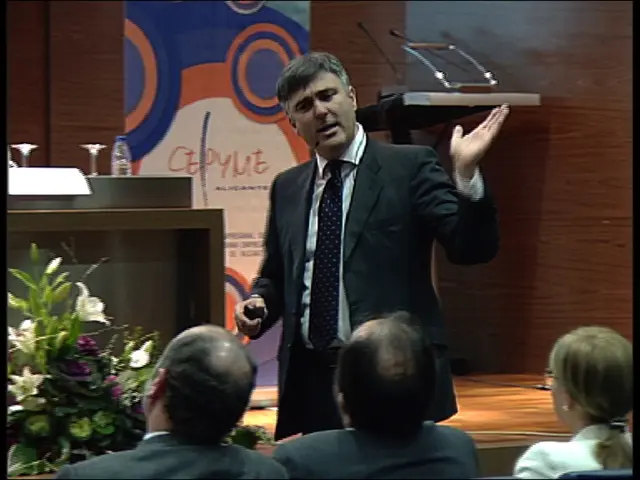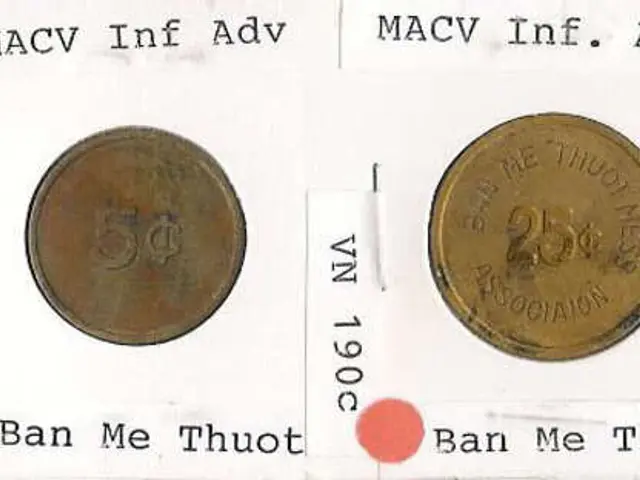Investment Prospect in Copper: Soaring Demand for Electrification Generating High-Value Profits
In the dynamic world of commodities, copper stands out as a critical metal with a promising future. Here's a rundown of the factors that make copper an attractive investment and what investors should consider when venturing into this sector.
Advanced processing technologies are key differentiators for successful copper companies, offering environmental and cost advantages. For instance, heap leaching for oxide copper deposits, a modern method, boasts approximately 38% lower carbon intensity compared to traditional flotation processing.
However, the copper mining industry faces significant challenges. Ore grades have declined by around 40% since 1990, leading to increased energy consumption, water usage, and waste management requirements.
Despite these challenges, the demand for copper is surging, particularly due to the rise of electric vehicles (EVs). Each EV requires approximately 4 times more copper than traditional internal combustion engines. With global EV sales projected to reach 30 million units annually by 2030, the demand for copper is set to soar.
Investors would do well to diversify their copper investments geographically, balancing political and regulatory risks. An optimized portfolio might include Canadian projects (with higher operating costs), Chilean operations (water constraints), Australian assets (mining-friendly regulations but distance to markets), and select opportunities in emerging jurisdictions with appropriate risk adjustments.
The copper sector offers a variety of investment profiles, ranging from development-stage companies to mid-tier producers, each with different risk-reward characteristics. Artificial intelligence and cloud computing have also created an unexpected copper demand surge, with advanced data centers requiring significant copper for supporting infrastructure.
Copper prices have demonstrated resilience, hovering above $4.00/pound, supported by Chinese infrastructure spending, U.S. grid modernization, and global decarbonization efforts. Strategic entry points typically emerge when copper prices consolidate after significant moves, producer equities lag physical copper price performance, sentiment indicators show excessive pessimism, and technical support levels hold during market corrections.
To manage commodity price volatility, investors should consider position sizing and diversification strategies, dollar-cost averaging into copper equity positions, utilizing options strategies to define risk parameters, maintaining exposure across the value chain, and focusing on companies with superior cost structures.
The renewable energy sector, another major consumer of copper, requires significant amounts of the metal. Achieving net-zero emissions by 2050 will require global copper consumption to increase by approximately 70% from current levels.
Major diversified miners offer lower-risk exposure to copper fundamentals, often paying substantial dividends with copper price leverage, maintaining strong balance sheets and operational diversification, and providing liquidity advantages for institutional investors.
However, mining companies have significantly reduced exploration budgets, creating a strategic shortage in the development-ready project pipeline. This shortage could lead to premiums for development-ready copper projects.
Environmental, social, and governance (ESG) factors increasingly influence copper project valuations. Companies demonstrating superior ESG practices command significant valuation premiums through lower costs of capital for project financing, enhanced access to institutional investment, reduced permitting timelines and regulatory friction, and stronger community support and social license to operate.
Companies in the development stage, offering the largest risk-bonus scenarios and maximizing the benefits from rising copper prices, are typically copper mining companies engaged in exploration and early-stage projects, especially those in regions with strong growth potential like Latin America and the USA.
Projects in tier-1 jurisdictions like Chile, Canada, and Australia command significant valuation premiums due to political stability and regulatory predictability.
To invest in the next major mineral discovery, consider using Discovery Alert's proprietary Discovery IQ model, which delivers real-time notifications when significant copper and other mineral discoveries are announced on the ASX.
The copper market presents a compelling opportunity for investors who understand the structural supply-demand dynamics reshaping this critical commodity market. The combination of accelerating demand from electrification, renewable energy, and digitalization alongside constrained supply from declining grades, extended development timelines, and exploration deficits creates a potentially multi-year bull market.
Companies positioned in Tier-1 jurisdictions with advanced projects and experienced management teams offer the most attractive risk-adjusted return potential as the world transitions toward electrification and sustainable energy systems. Strategic partnerships can also provide technical expertise, financial capacity for capital-intensive development, market access and offtake arrangements, and risk sharing across multiple stakeholders, often resulting in significant rerating for companies that secure these partnerships.
Read also:
- Peptide YY (PYY): Exploring its Role in Appetite Suppression, Intestinal Health, and Cognitive Links
- Toddler Health: Rotavirus Signs, Origins, and Potential Complications
- Digestive issues and heart discomfort: Root causes and associated health conditions
- House Infernos: Deadly Hazards Surpassing the Flames








